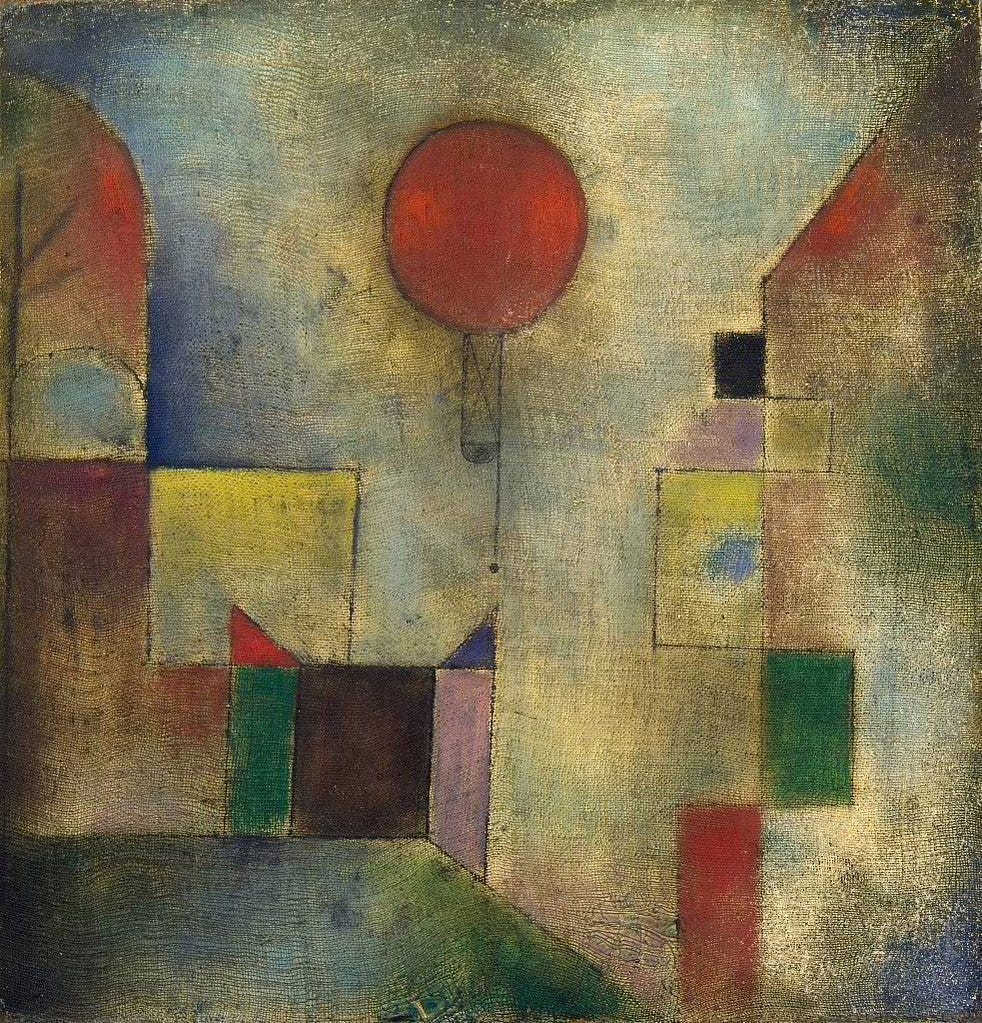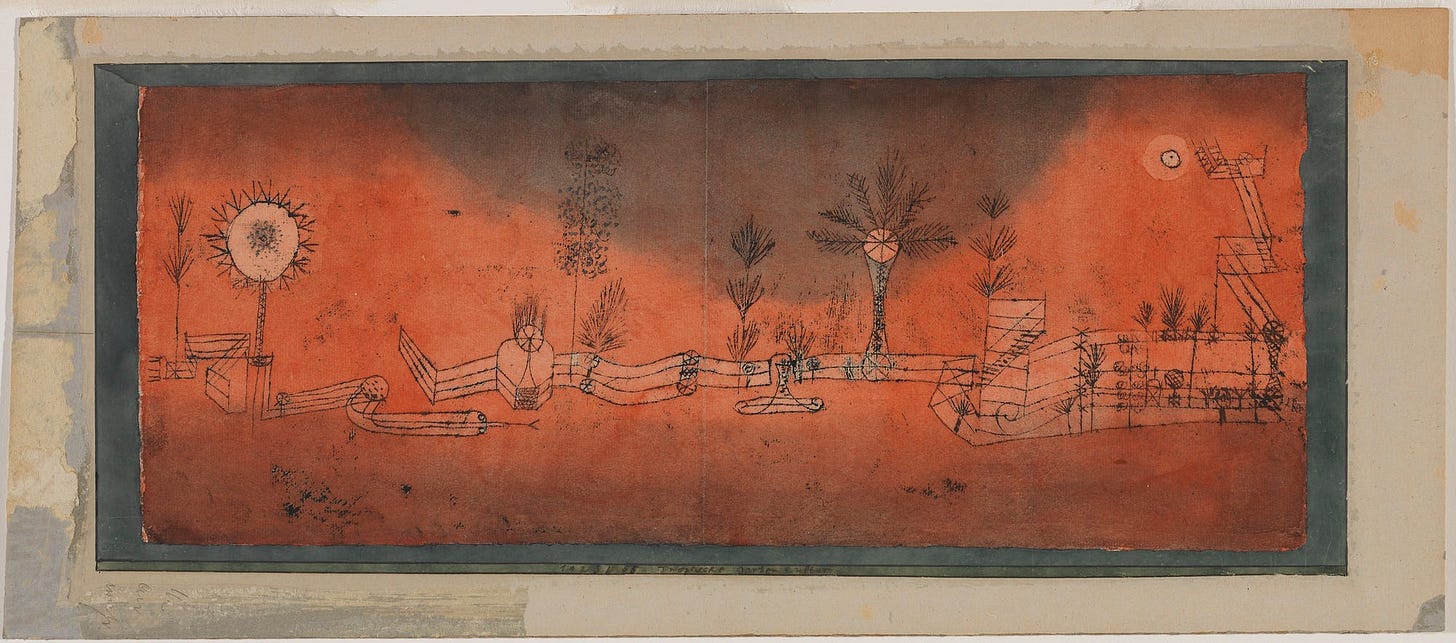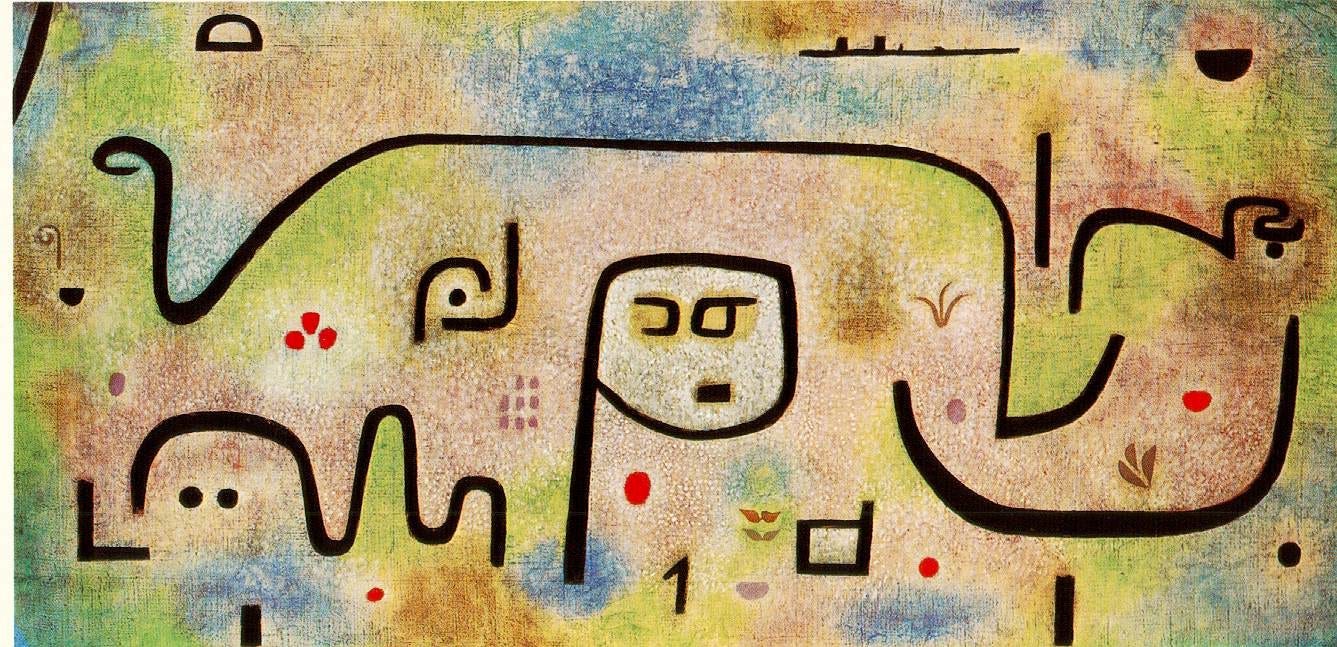5 Lessons in Creative Inspiration and Following Your Impulse
How Paul Klee changed my perspective on the art of making

Dear Reader,
I have been thinking recently about creativity and what it means to unlearn the things we believe we know. Knowledge and expertise can offer stability, like a fortress, but sometimes we have to break holes in the walls to keep our practice free and fresh.
Creativity often struggles with this tension: how to learn, improve and perfect without getting stuck in habits that sooner or later restrict us.
When I feel like I need a dose of re-education, I turn back to the 20th-century Swiss artist Paul Klee. He was a painter who — to my eyes — always worked on the cusp of what he did not know.
It was an approach that led to a highly distinctive style that nonetheless had a thousand different facets. Taken as a whole, his paintings constitute a project of discovery.
Here are 5 lessons from Klee that have changed my perspective on creativity and, ultimately, myself.
1. Stay receptive and undogmatic

Klee had a remarkable capacity to embrace a wide range of artistic methods, often blending them in unconventional ways.
Take a moment to look down the following list. It gives a small snapshot of the materials that he used to create his paintings (each item refers to the combination of materials used in an individual work):
oil, the lines imprinted, points imprinted in white and subsequently over-painted, on casein colour on canvas mounted on canvas stretcher
oil and watercolour on oil ground on gauze on cardboard, nailed to canvas stretcher
watercolour, ink and pencil on paper, cut up and re-combined with silver paper, framed in ink, on cardboard
oil and gouache on newspaper on jute on canvas stretcher
oil scratch drawing on cardboard, painted on the reverse and over-painted in white
To me, this spontaneity is particularly striking. It underscores the value of staying flexible, receptive and undogmatic, remaining open to untutored approaches. While most artists stick to a single medium like oil paints, Klee was happy to roam and combine. His disciplined approach as an artist allowed him to let his paintings unravel as he made them.
I find this method — of pulling in different materials during the creative process from the tools at hand — a vital source of inspiration. His body of work represents an ongoing exploration of what paint and its counterparts might become, which for me suggests a beautiful synergy between resourcefulness and freedom.
2. Enable the imagination

Paul Klee’s famous dictum — that drawing is a matter of taking a line for a walk — reveals much about how his art was generated.
Keep reading with a 7-day free trial
Subscribe to Discover Art History - Christopher P Jones to keep reading this post and get 7 days of free access to the full post archives.



